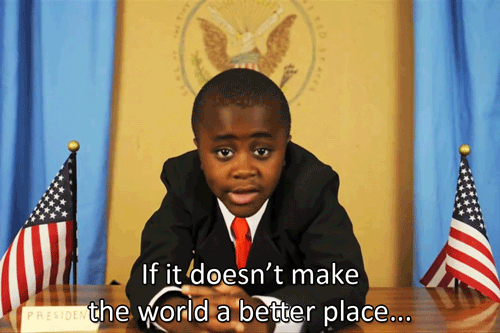A New Speech About Climate Change Is Fascinating Both For What It Says And Who Said It.

A new speech about climate change is fascinating both for what it says and who said it.
Mark Carney, the governor of the Bank of England, declared that the warming climate presented major risks for the global economy and global financial stability, and that businesses and regulators needed to move more quickly to try to contain the potential economic damage even though it may seem uncertain and far off.
His warning, delivered in a 4,400-word speech with ample footnotes on Tuesday, is the latest example of how climate change has moved beyond theoretical scientific debates to the start of practical planning for safeguarding the economy and business.
“We don’t need an army of actuaries to tell us that the catastrophic impacts of climate change will be felt beyond the traditional horizons of most actors — imposing a cost on future generations that the current generation has no direct incentive to fix,” he said. “In other words, once climate change becomes a defining issue for financial stability, it may already be too late.”
Mr. Carney calls the economic challenges around climate the “tragedy of the horizon,” in contrast to the long-noted economic phenomenon of the “tragedy of the commons.” That is, the costs of a warming climate come on a time scale and with an uncertainty that go beyond the usual multiyear business cycle, beyond political cycles of presidential and parliamentary elections, or as he puts it, beyond “the horizon of technocratic authorities, like central banks, who are bound by their mandates.”
It might seem odd for a central banker to be talking about a long-term problem of global climate, all the more so when the global economy is looking rather shaky. After all, the job is typically to worry about price inflation and the banking system.
But if you back up and define a central banker’s job a little more broadly — to worrying about the economy and the stability of the financial system writ large — it quickly becomes clear why climate matters.
Good read from NYTimes.
More Posts from Dotmpotter and Others

What would be the effect of more women working in agriculture?
“The women I met in agriculture showed a clear preference for working on organic and small farms, which are more likely than factory farms to reflect the values of animal welfare, human health and environmental sustainability."
-Sonia Faruqi says on what she found when she spent time visiting farms in eight different countries.
Agriculture needs more women (The Atlantic)
Ending slavery will also help save the one thing that connects us all... Earth.

Read it here.
“Desperate migrants from Myanmar and Cambodia are enslaved on fishing boats to strip the oceans of fish… in Brazil, young men are trapped by debt in work illegally logging the Amazon forest… Brick kilns in India, operated by bonded labourers, are fuelled with old tyres and used motor oil, spewing carcinogens into the air.”
REBLOG to educate your community about the impact of our everyday consumption.
My house is covered with solar panels, and I drove the first hybrid electric Ford in Vermont and on and on and on. I try not to fool myself with that’s how we’re going to win this fight. Global warming is a structural and systemic issue, that’s where it comes from, the structures and systems. So changing those is what’s key. As individuals, we’re relatively powerless against climate change. That’s why the most important thing an individual can do is not be an individual, which means joining with other people in this battle.
Bill McKibben, author, activist and co-founder of 350.org, arguing that the collective nature of our climate crisis requires a collective response. In essence, recycling, commuting by bike or electric vehicle, using cloth bags and unplugging our phone chargers are all fine and good, but they aren’t going to get the job done. Why? Because our economies run largely on fossil fuel energy (i.e. coal, oil and natural gas) and need to be decarbonized in order to ensure we all have a future to look forward to. The quote comes from a recent interview with economic researcher Chris Martenson for his website, ‘Peak Prosperity’. The whole interview is worth a listen and share.

Photo: Some of the more than 300,000 strong ‘People’s Climate March’ last year in New York City. (Source: UN)

Infographic: Current pledges by countries to #ActOnClimate and transition to low carbon economies currently exceed the 2°C (3.6°F) threshold beyond which climate science shows catastrophic consequences for people, planet and economies. Long story short, we need to up our ambition and urgency. The COP21 negotiations in Paris this fall are critical to secure a deal to get us on the path to a climate-smart, globally sustainable future. (Source: Climate Interactive) Related:
‘Limited progress seen even as more nations step up on climate’ (New York Times)
‘How your brain tricks you into thinking you are greener than you actually are’ (Washington Post)
Dr. William Rees: ‘Climate change is one symptom’ (YouTube)
‘Systems thinking’ (Wikipedia)
‘Shell abandons Alaska Arctic oil drilling’ (Guardian)


Researchers at MIT have developed a new method for harnessing energy generated by very small bending motions, which could be capable of harvesting power from a broader range of natural human activities such as walking and exercising.
Yale Environment 360: New Device Harvests Energy From Walking and Exercising, Researchers Say
Ifixit repair kits: everything you need to fix everything

Ifixit produce open repair guides for everything imaginable, in a variety of languages, and help sustain a global community of independent repairers who divert electronics from e-waste dumps and keep poor and marginalized people connected to their work, school and families.
The Ifixit repair kits are thoughtful, high-specification, low-cost toolkits designed to work on all modern gadgets, as well as traditional ones (for example, Ifixit manufacture their own drivers for Apple’s bizarre “pentalobe” screws, which Apple had instructed its Genius Bar staff to quietly swap in during routine repairs).
The big daddy of Ifixit kits is the $130 128-bit Universal Bit Kit, which comes in a handsome wooden case and is covered by Ifixit’s lifetime warranty.

But Ifixit makes smaller, more specialized kits, including theSmartphone Repair Kit, priced at $25, specifically aimed at the budgets of enterprising high-school students who want to start their own smartphone repair businesses, using Ifixit’s manuals.
http://boingboing.net/2015/12/02/ifixit-repair-kits-everything.html

Earlier this year, BioDigital partnered with About.com to provide interactive visualizations for common health conditions. Patients searching for information about Type 2 diabetes, for instance, are presented with a 3D model of a cell’s response to insulin, in which they can explore the process from different angles while toggling between diabetic and normal cell function.
What’s revolutionary about the API launch, though, is that now developers can personalize the BioDigital human by integrating their own imaging data, movement data collected by wearables, and health record data, among other sources.
So essentially, instead of clicking around the standard human model on About.com, we could soon be exploring 3D models of our own bodies, constructed with our unique health data.
For athletes especially, the immediate advantages of virtually replicating a moving body are obvious. If you can see exactly which movements inflict pain or stress on your body, it’s much easier to understand how to avoid them.
For medical professionals, though, the ability to visualize vast amounts of health data in real time via the BioDigital human has the potential to change the way new information is analyzed and consumed.
“The human body is this incredible system of systems, and there’s an infinite amount of detail,” says Sculli. “So we can start mapping cellular mechanisms, and genomic and brain activity, and all of this information that’s being collected in masses from research and wearables, and make it consumable for people.”
(via 3D Modeling Startup BioDigital Launches An API For The Human Body | TechCrunch)

Mapping the World’s Air Pollution in Real Time
[Image: Air Quality Index China]
700,000-Year-Old Stone Tools Point to Mysterious Human Relative

Someone butchered a rhinoceros in the Philippines hundreds of thousands of years before modern humans arrived—but who?
Stone tools found in the Philippines predate the arrival of modern humans to the islands by roughly 600,000 years—but researchers aren’t sure who made them.
The eye-popping artifacts, unveiled on Wednesday in Nature, were abandoned on a river floodplain on the island of Luzon beside the butchered carcass of a rhinoceros. The ancient toolmakers were clearly angling for a meal. Two of the rhino’s limb bones are smashed in, as if someone was trying to harvest and eat the marrow inside. Cut marks left behind by stone blades crisscross the rhino’s ribs and ankle, a clear sign that someone used tools to strip the carcass of meat.
But the age of the remains makes them especially remarkable: The carved bones are most likely between 631,000 and 777,000 years old, with researchers’ best estimate coming in around 709,000 years old. Read more.
-
 createmonthlyincome liked this · 8 years ago
createmonthlyincome liked this · 8 years ago -
 thebusinessinsurancebureau liked this · 9 years ago
thebusinessinsurancebureau liked this · 9 years ago -
 highintensitypan reblogged this · 9 years ago
highintensitypan reblogged this · 9 years ago -
 dotmpotter reblogged this · 9 years ago
dotmpotter reblogged this · 9 years ago -
 yeltsinsstar reblogged this · 9 years ago
yeltsinsstar reblogged this · 9 years ago -
 microaerophilic-blog liked this · 9 years ago
microaerophilic-blog liked this · 9 years ago -
 sydneyno liked this · 9 years ago
sydneyno liked this · 9 years ago -
 peaceandpandemonium reblogged this · 9 years ago
peaceandpandemonium reblogged this · 9 years ago -
 dean-eco-on-blog liked this · 9 years ago
dean-eco-on-blog liked this · 9 years ago -
 cleanenergyaesthetic reblogged this · 9 years ago
cleanenergyaesthetic reblogged this · 9 years ago -
 kelmunger reblogged this · 9 years ago
kelmunger reblogged this · 9 years ago -
 martinezcolumn reblogged this · 9 years ago
martinezcolumn reblogged this · 9 years ago -
 jemapellesarah liked this · 9 years ago
jemapellesarah liked this · 9 years ago -
 pa-hey reblogged this · 9 years ago
pa-hey reblogged this · 9 years ago -
 booshippl liked this · 9 years ago
booshippl liked this · 9 years ago -
 kelmunger liked this · 9 years ago
kelmunger liked this · 9 years ago -
 ladyifrit liked this · 9 years ago
ladyifrit liked this · 9 years ago -
 edgestation liked this · 9 years ago
edgestation liked this · 9 years ago -
 peterwbarakat reblogged this · 9 years ago
peterwbarakat reblogged this · 9 years ago -
 peterwbarakat liked this · 9 years ago
peterwbarakat liked this · 9 years ago -
 tulgey-wood reblogged this · 9 years ago
tulgey-wood reblogged this · 9 years ago -
 jilli1205 reblogged this · 9 years ago
jilli1205 reblogged this · 9 years ago -
 jilli1205 liked this · 9 years ago
jilli1205 liked this · 9 years ago -
 scriptabanane reblogged this · 9 years ago
scriptabanane reblogged this · 9 years ago -
 buiosullelabbra liked this · 9 years ago
buiosullelabbra liked this · 9 years ago -
 rispostesenzadomanda reblogged this · 9 years ago
rispostesenzadomanda reblogged this · 9 years ago -
 i-am-the-czar reblogged this · 9 years ago
i-am-the-czar reblogged this · 9 years ago -
 wineslacker liked this · 9 years ago
wineslacker liked this · 9 years ago -
 turnallthelocks liked this · 9 years ago
turnallthelocks liked this · 9 years ago -
 wedontneednothoughtscontrol reblogged this · 9 years ago
wedontneednothoughtscontrol reblogged this · 9 years ago -
 hoekage-666 reblogged this · 9 years ago
hoekage-666 reblogged this · 9 years ago -
 brbread liked this · 9 years ago
brbread liked this · 9 years ago -
 guramiii reblogged this · 9 years ago
guramiii reblogged this · 9 years ago -
 guramiii liked this · 9 years ago
guramiii liked this · 9 years ago -
 espigolpluma reblogged this · 9 years ago
espigolpluma reblogged this · 9 years ago -
 dendroica liked this · 9 years ago
dendroica liked this · 9 years ago -
 featherbee liked this · 9 years ago
featherbee liked this · 9 years ago -
 mommapolitico reblogged this · 9 years ago
mommapolitico reblogged this · 9 years ago -
 twesg reblogged this · 9 years ago
twesg reblogged this · 9 years ago -
 ramoncacho liked this · 9 years ago
ramoncacho liked this · 9 years ago
